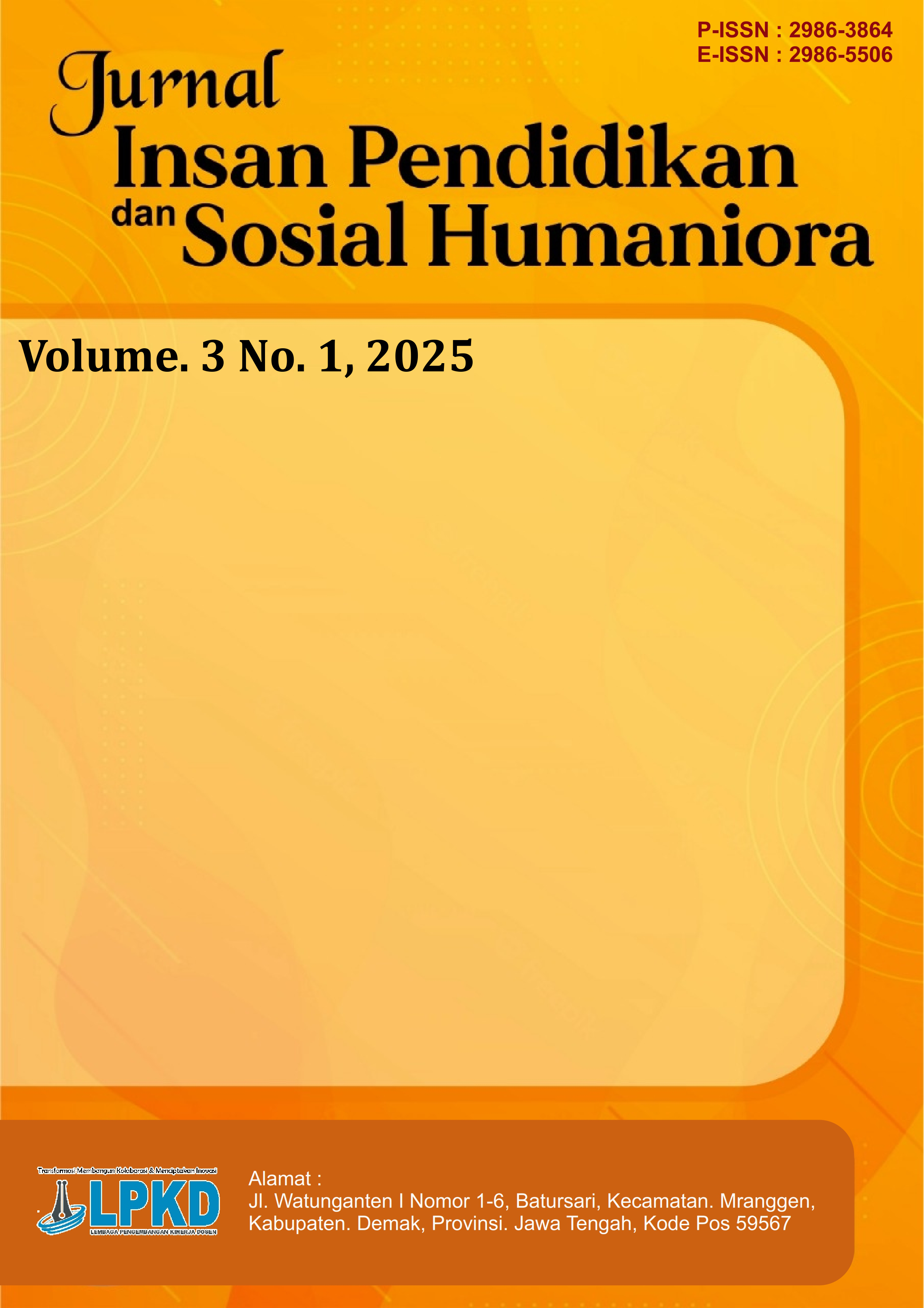Knitting Tradition and Modernity: Reflections on the Role of Islamic Religious Education in the Global Era
DOI:
https://doi.org/10.59581/jipsoshum-widyakarya.v3i1.4734Keywords:
Globalization, Educational integration, Modernity, Islamic education, TraditionAbstract
Islamic education faces significant challenges in the era of globalization, where technological advancements, secularization, and pluralism are reshaping the educational landscape. This study aims to analyze how Islamic education can weave tradition and modernity to remain relevant in the face of global dynamics. This research employs a qualitative approach using a literature review method, examining various sources related to Islamic education, globalization, and the integration of traditional and modern values. The findings indicate that Islamic education plays a strategic role in shaping the character and morality of Muslim generations while fostering an adaptive understanding of contemporary changes. Curriculum integration that combines religious and scientific knowledge, along with the utilization of technology in learning, emerges as a solution to maintain the relevance of Islamic education. Furthermore, the role of teachers as mediators between tradition and modernity is crucial to ensure contextual learning. The implications of this study highlight the need for a flexible curriculum, enhanced educator competencies, and collaboration between educational institutions, governments, and society to strengthen the Islamic education system amid the tides of globalization.
References
Abd Rahman, A. (2015). Peran pendidikan Islam dalam pembentukan moral bangsa. AR-RIWAYAH, 7(1), 53–58. https://doi.org/10.24198/arriwayah.v7i1.5358
Abdullah, A. (2021). The role of teachers in Islamic education: Bridging tradition and modernity. Journal of Islamic Pedagogy, 8(2), 67-82. https://doi.org/10.1080/12345678.2021.1234567
Ali, M. (2020). Globalization and Islamic education: Challenges and opportunities. Journal of Islamic Studies, 45(2), 123-145. https://doi.org/10.1080/12345678.2020.1234567
Asad, T. (2018). Secularism and the crisis of Islamic education. Oxford University Press.
Creswell, J. W. (2018). Research design: Qualitative, quantitative, and mixed methods approaches (5th ed.). Sage.
Daradjat, Z., dkk. (2008). Ilmu pendidikan Islam (Edisi I). PT Bumi Aksara.
Hashim, R. (2020). Integrating Islamic and modern education: A framework for the 21st century. International Journal of Educational Research, 50(4), 201-215. https://doi.org/10.1080/12345678.2020.1234567
Hefner, R. W. (2019). Islam and modernity: The role of education in shaping Muslim identities. Cambridge University Press.
Merriam, S. B., & Tisdell, E. J. (2016). Qualitative research: A guide to design and implementation (4th ed.). Jossey-Bass.
Puspitasari, R., Wibowo, A., & Hidayat, T. (2022). Pendidikan Islam dan pembentukan karakter religius di era globalisasi. Jurnal Pendidikan Islam, 14(2), 112–130. https://doi.org/10.24198/jpi.v14i2.112130
Ridwan, M. (2022). Digitalization of Islamic education: Opportunities and challenges. Journal of Muslim Education, 15(1), 45-60. https://doi.org/10.1080/12345678.2022.1234567
Rusydy, M. (2018). Pendidikan Islam di era globalisasi: Integrasi tradisi dan modernitas. Jurnal Studi Islam, 9(1), 67–80. https://doi.org/10.24198/jsi.v9i1.6780
Setyawan, R. (2020). Globalisasi dan tantangan pendidikan Islam dalam menjaga identitas keagamaan. Jurnal Pendidikan Islam Kontemporer, 11(2), 45–62. https://doi.org/10.24198/jpik.v11i2.4562
Weber, R. P. (1990). Basic content analysis (2nd ed.). Sage.
Zulkifli, N. A. (2021). The impact of technology on Islamic education in the digital age. International Journal of Islamic
Downloads
Published
How to Cite
Issue
Section
License
Copyright (c) 2024 Jurnal Insan Pendidikan dan Sosial Humaniora

This work is licensed under a Creative Commons Attribution-ShareAlike 4.0 International License.





